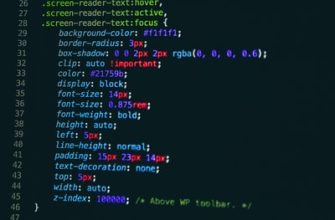If you’re looking to optimize your site for search engine optimization (SEO), you’ll want to take advantage of a Javascript technique to improve the site’s speed and performance. You can do this by linking images and videos with # symbols or hashes, using lazy-loading images, and creating relevant and link-worthy content.
Lazy-loading images
Lazy-loading images can improve the speed of your website and improve your user experience. It does so by deferring the loading of assets until you need them. The result is a faster page and less bandwidth used. This is ideal for users on slow Internet connections.
However, lazy-loading is not an ideal solution for all sites. It’s important to know how to lazy-load images in a way that doesn’t affect your organic SEO, and that doesn’t compromise indexing. You can use a Javascript library to help.
The Intersection Observer API is an API for browsers that monitors all image loads. It avoids the guesswork of trying to figure out when a particular image will load. The API will also detect images that are offscreen or hidden.

Lazy-loading is a common practice, especially on image-heavy sites. It’s also good for those with slow Internet connections, as the images only need to be loaded when the user actually views them.
Disabling JavaScript in the browser
Disabling JavaScript in the browser has several advantages. It will improve page load speed and improve online activity. It also protects you against malicious attacks. However, there are some disadvantages to disabling it.
Most people turn off JavaScript because they do not want it to affect their browsing experience. This is a misconception. If you disable it, you will not get to see the full experience.
In addition to slowing down your browser, rendering client-side JavaScript can impact your search engine optimization. For instance, Google advises site owners to remove render-blocking resources.
While some CSS files are render-blocking, not all are. In addition, some popular JavaScript frameworks have tools to help make it easier to implement SSR.
If you do decide to deactivate JavaScript, be sure to thoroughly test the frontend of your website. Disabling it may not affect the functionality of your site, but it may cause the site to look confusing.
If you do not wish to disable it, you can simply reactivate it. If you are a developer, you may want to look into hybrid solutions that will allow you to receive both client-side and server-side rendered JavaScript content.
Link URLs with # symbols or hashes
The most popular programming language, JavaScript is used to create dynamic, interactive websites. However, there are many issues with using JavaScript on your site.
Among the many concerns is the fact that JavaScript can impact page load times. It can also cause problems with SEO. If you want to avoid these problems, you’ll need to understand how the search engines handle JS.
First, you need to know that the search engine bots that crawl your site have specific rules. These rules are meant to make sure the content of your pages is understood. If your pages don’t meet these guidelines, they won’t be indexed.
Second, you need to make sure your URLs are unique. Each section of your site should have its own URL. This will help Google crawl your website more effectively.
Third, you’ll need to remove unnecessary code. This will free up bandwidth and improve the user experience. You can do this by minifying your CSS and JS files.
Creating relevant and link-worthy content
If you want to build links and get a better ranking, you need to create relevant and link-worthy content. That is not easy. It takes time and creativity to come up with a great article or blog post. You need to create something that other marketers will love. This can be tricky, but luckily, there are a few tricks you can use to improve your chances.
The most important aspect of creating relevant and link-worthy content is to provide readers with valuable information. Make sure to make the information easy to read and understand. If you have a lot of information, you can create an infographic or a video. It can also help to include a few questions to get the reader thinking.
One of the best ways to get people to engage with your content is to strike an emotional chord. You can do this by using popular culture or socio-economic issues. You can also rely on conversational language and easy social sharing buttons.








